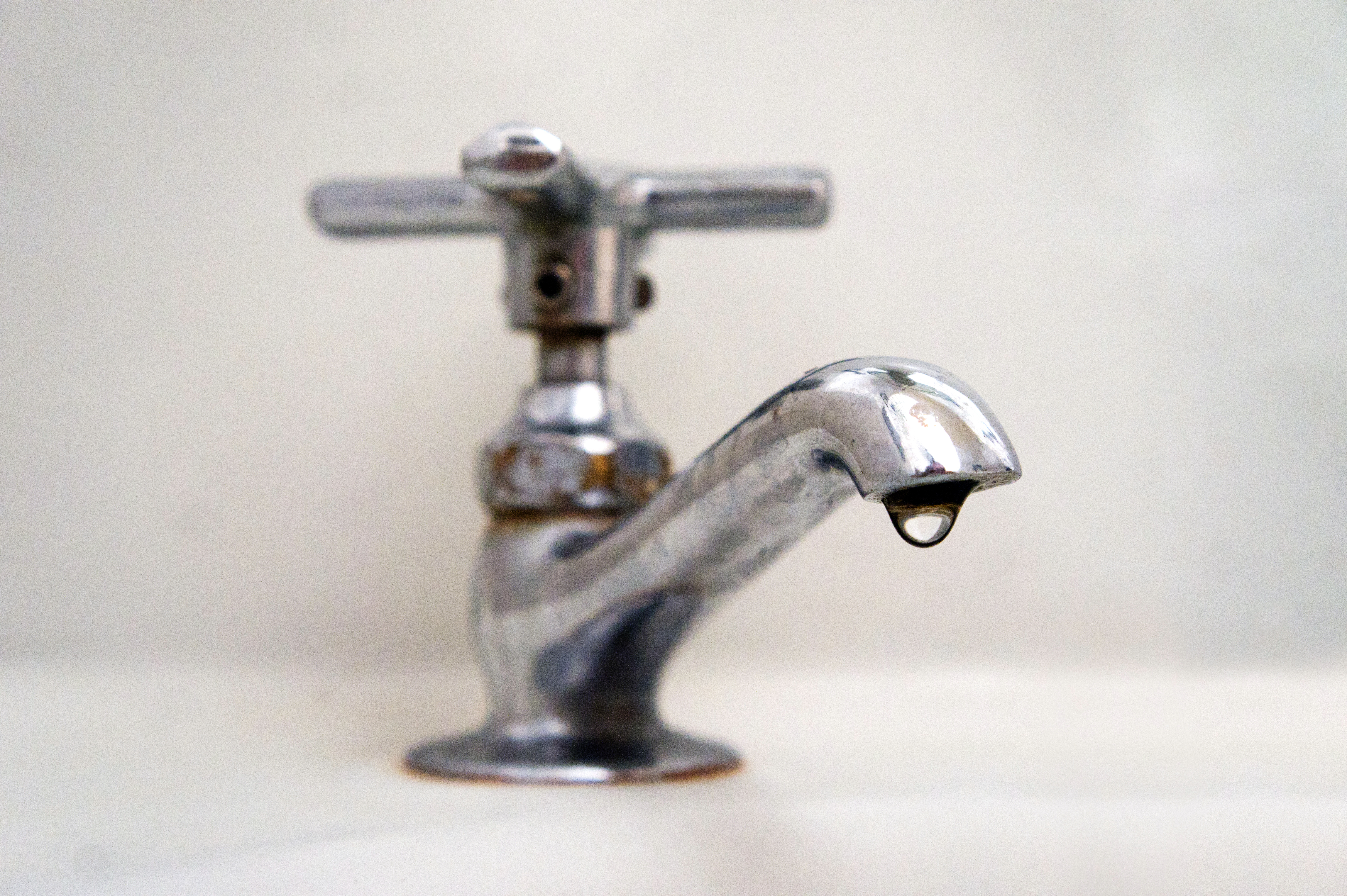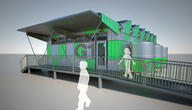You are here
 |
| photo: Jeremy Faludi |
Fixtures that save water include low-flow shower heads, sinks with auto-shutoff mechanisms, and water-saving toilets and urinals. Equipment that saves water includes dishwashers, clothes washers, other commercial kitchen equipment such as sprayers and steam cookers, as well as industrial process equipment.
Reducing water use from fixtures and equipment is perhaps the easiest method to reduce total potable water use. It does not require extensive design solutions, just specifying certain products. Avoiding large fountains, pools, and other water features will also save water use.
Predicting Water Savings
How much do these products save? You need to calculate it by calculating the total building water use based on status-quo "baseline" products, and the total water use with the water-saving products. In each case, this is simply the sum of water use for all products in the building. The water use for each product is the number of liters per use multiplied by the number of uses per year.
Total Water Use = Σ (liters per use • number of uses / year)
Standard estimates for the amount of water per use may vary by region, but some government organizations and non-government certification systems have standards for baseline water use.1
The number of uses is determined by the number of occupants, their gender, the amount of time they spend in the building, and the activities they engage in there.2 These details will be defined by the building's program.3 The ratio of women to men should be assumed to be 50/50 unless it is known to be otherwise for the building's program.
For example, a retail store's bathroom may have a toilet, a urinal, and a sink. Visitors will use the restroom much less per person than a full-time employee ("FTE") would, but there will be many more visitors than employees. Men will use the urinal, but as a result will use the toilet less often than women. Both genders are assumed to use the sink equally.
For each fixture, its use can be calculated as follows:
| Number of Uses / Day = |
( FTE * male ratio * male uses / day ) + ( FTE * female ratio * female uses / day ) + ( Visitor * male ratio * male uses / day ) + ( Visitor * female ratio * female uses / day ) |
Once the number of uses per day is calculated, it can be multiplied by the number of days per year that the building is occupied (250 or 260 days/year for many offices). That will be the total uses per year. That can then be plugged into the first equation above, calculating total water use by multiplying liters per use by number of uses per year.

